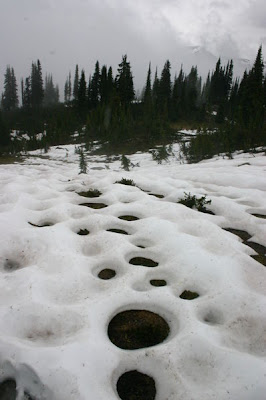Snow is a type of precipitation in the form of crystalline water ice, consisting of a multitude of snowflakes that fall from clouds.
The process of precipitation is called snowfall.Since snow is composed of small ice particles, it is a granular material.
It has an open and therefore soft structure, unless packed by external pressure. The METAR code for snow is SN.
In hydrology,
snowmelt is surface runoff produced from melting snow. It can also be used to describe the period or season during which such runoff is produced.
Predicting snowmelt runoff from a drainage basin may be a part of designing water control projects.
Rapid snowmelt can cause flooding. If the snowmelt is then frozen, very dangerous conditions and accidents can occur, introducing the need for salt to melt the ice.
Increased water runoff due to snowmelt was a cause of many famous floods. One of them was the Red River Flood of 1997, when the Red River of the North in the Red River Valley of the United States and Canada flooded. British Columbia is an area prone to snowmelt flooding as well.


Vegetation gives off heat, resulting in this circular snowmelt pattern.
Symmetry of an idealized snowflake
Snowflakes by Wilson Bentley, 1902








1 comment:
Those circular patches are interesting.
Post a Comment